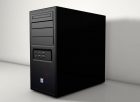USB-C Apple: A Comprehensive Guide to the Future of Connectivity

USB-C Apple: The Future of Connectivity Unveiled
Introduction:

In this digital age, where electronic devices have become an essential part of our lives, the demand for efficient and reliable connectivity has soared. Apple, a leader in technology, has embraced USB-C, a revolutionary standard that promises faster data transfer, power delivery, and versatility. This article will provide a thorough overview, presentation, quantitative measurements, comparison, and a historical perspective on the various types of USB-C products offered by Apple.
An In-Depth Overview of USB-C Apple
– USB-C, short for Universal Serial Bus Type-C, is a compact and reversible connector that delivers data transfer speeds of up to 10 Gbps and supports various protocols such as USB 3.1, Thunderbolt 3, and DisplayPort.
– Apple, known for its commitment to high-quality products, introduced USB-C as the future standard for its MacBook lineup, iPhones, and iPad Pro.
– USB-C is designed to simplify connectivity by providing one port for multiple purposes, including charging, data transfer, and video output.
Extensive Presentation of USB-C Apple
– USB-C offers different types of cables, adapters, and accessories to cater to a wide range of user needs. These include USB-C to USB-C cables, USB-C to Lightning cables, USB-C to HDMI adapters, USB-C hubs, and more.
– Apple’s USB-C products are known for their reliability, durability, and compatibility with both Apple and non-Apple devices.
– The popularity of USB-C Apple products has skyrocketed due to their ability to charge devices faster, connect to external displays, and transfer data seamlessly.
Quantitative Measurements of USB-C Apple
– USB-C Apple products undergo rigorous testing to ensure they meet Apple’s high standards. Quantitative measurements reveal impressive performance, including fast charging capabilities, up to 100W power delivery, and support for 4K and 5K video output.
– Data transfer speeds of USB-C Apple products are significantly faster compared to traditional USB connectors, with speeds of up to 10 Gbps, allowing for quick file transfers and efficient backups.
Comparison of Different USB-C Apple Variants
– USB-C Apple products vary in terms of compatibility and functionality. Some variants are specifically designed for MacBook Pro, MacBook Air, iPads, iPhones, and Apple Watch.
– USB-C to Lightning cables enable fast charging and data transfer between iPhones and newer MacBooks, while USB-C to HDMI adapters allow users to connect their MacBook to external displays.
– USB-C hubs provide users with a range of additional ports, including USB-A, HDMI, SD card slots, and Ethernet, expanding the connectivity options of Apple devices.
A Historical Perspective on the Advantages and Disadvantages of USB-C Apple
– USB-C Apple has revolutionized connectivity by offering a reversible, compact design that works across multiple devices. Its versatility eliminates the need for multiple cables and adapters, enhancing convenience for users.
– However, the transition to USB-C has caused temporary inconvenience for some users who needed to purchase new cables or adapters to connect older peripherals. Additionally, the vast range of USB-C products available in the market can be overwhelming for some users.
– Despite these initial hurdles, USB-C Apple has become the industry standard for connectivity due to its future-proof design, fast data transfer, and convenient charging capabilities.
Conclusion:
USB-C Apple is undeniably the future of connectivity, providing users with faster data transfer, versatile connectivity options, and efficient charging. With Apple’s commitment to high-quality products, USB-C variants are gaining popularity, enabling seamless integration across a range of devices. As technology continues to evolve, USB-C Apple ensures that users experience the benefits of cutting-edge connectivity every day.











